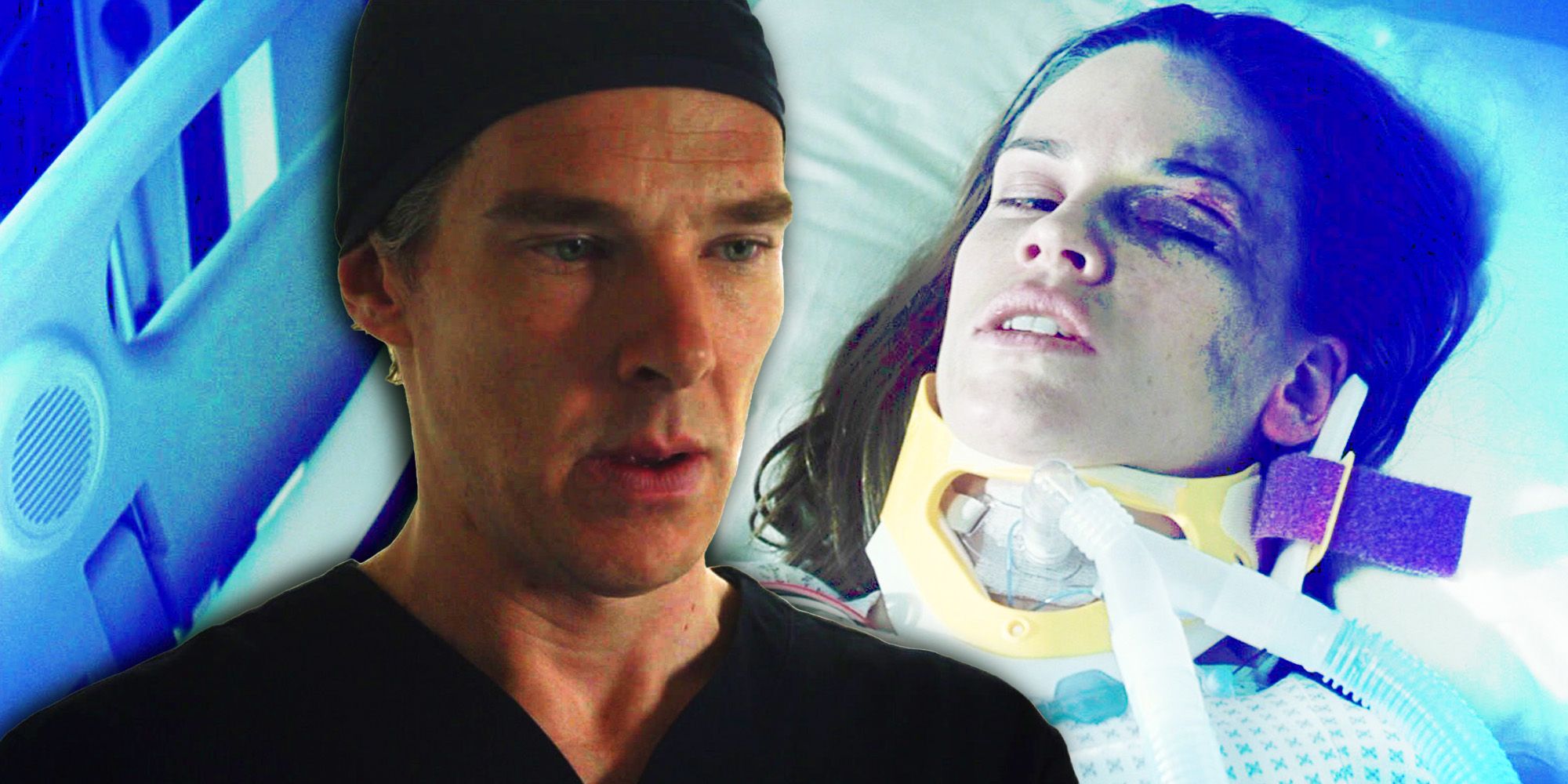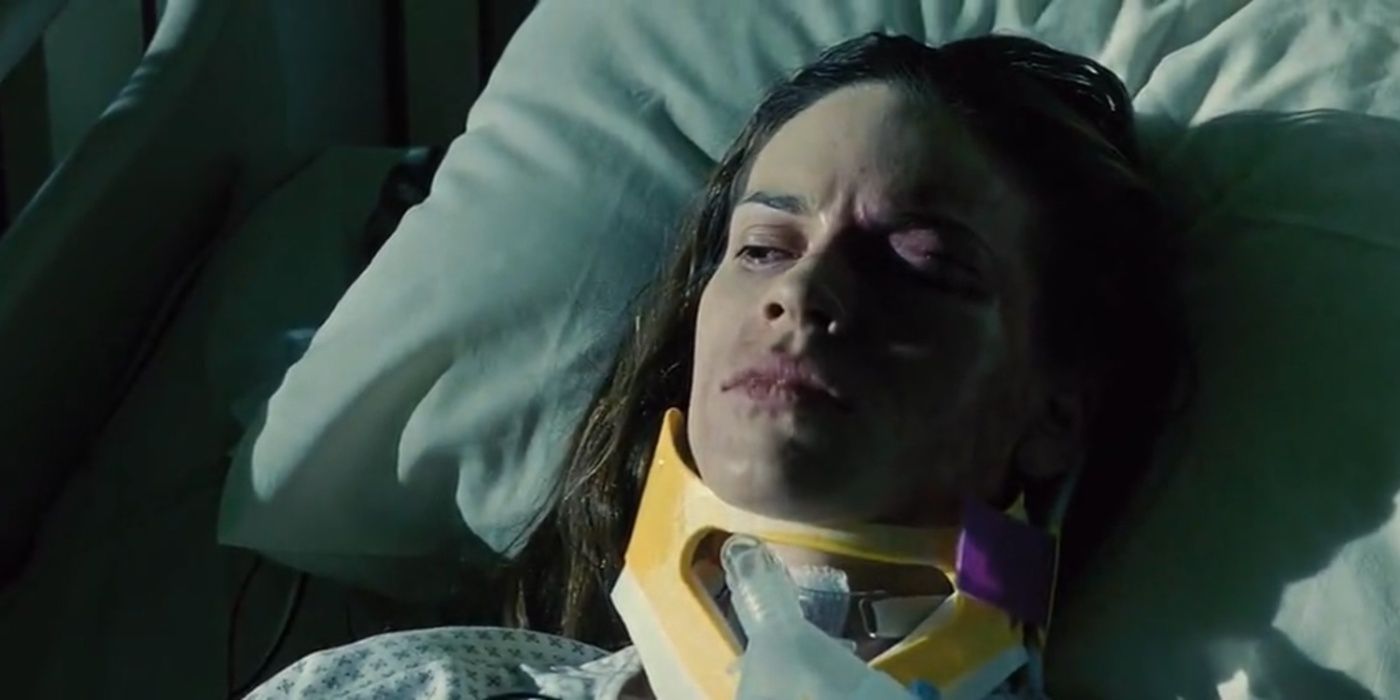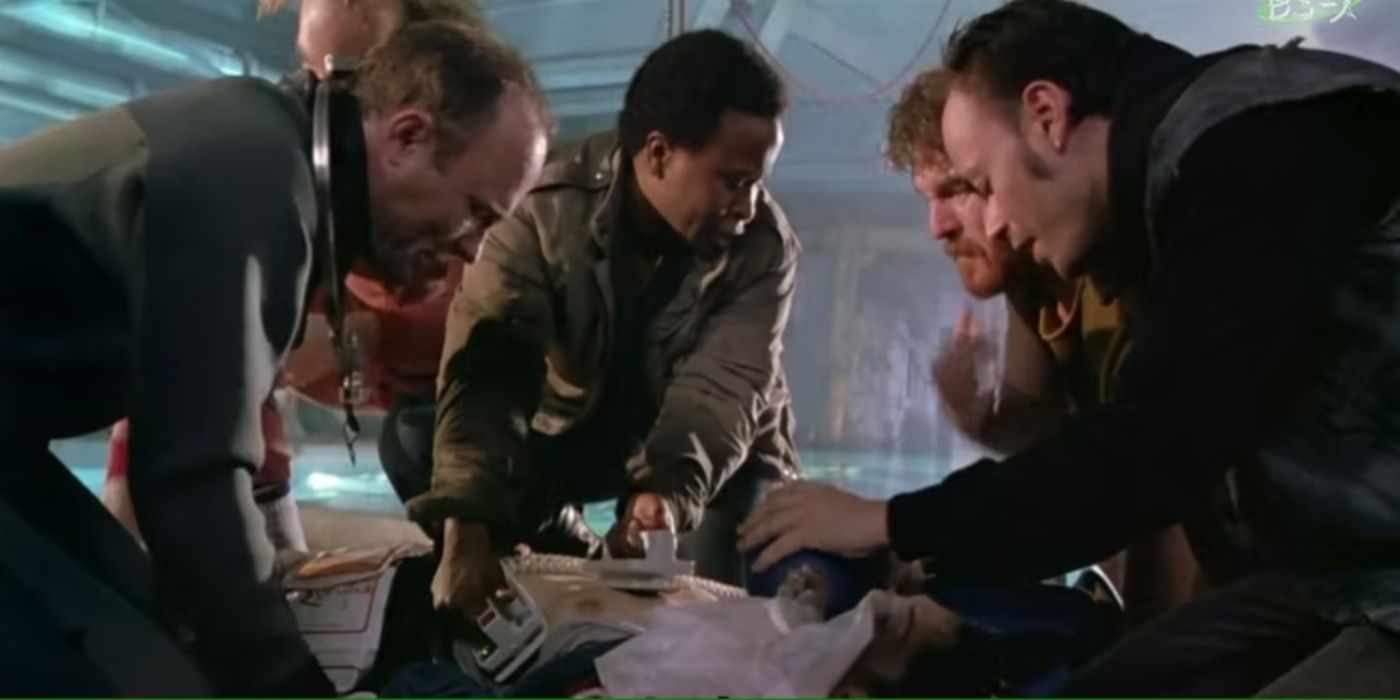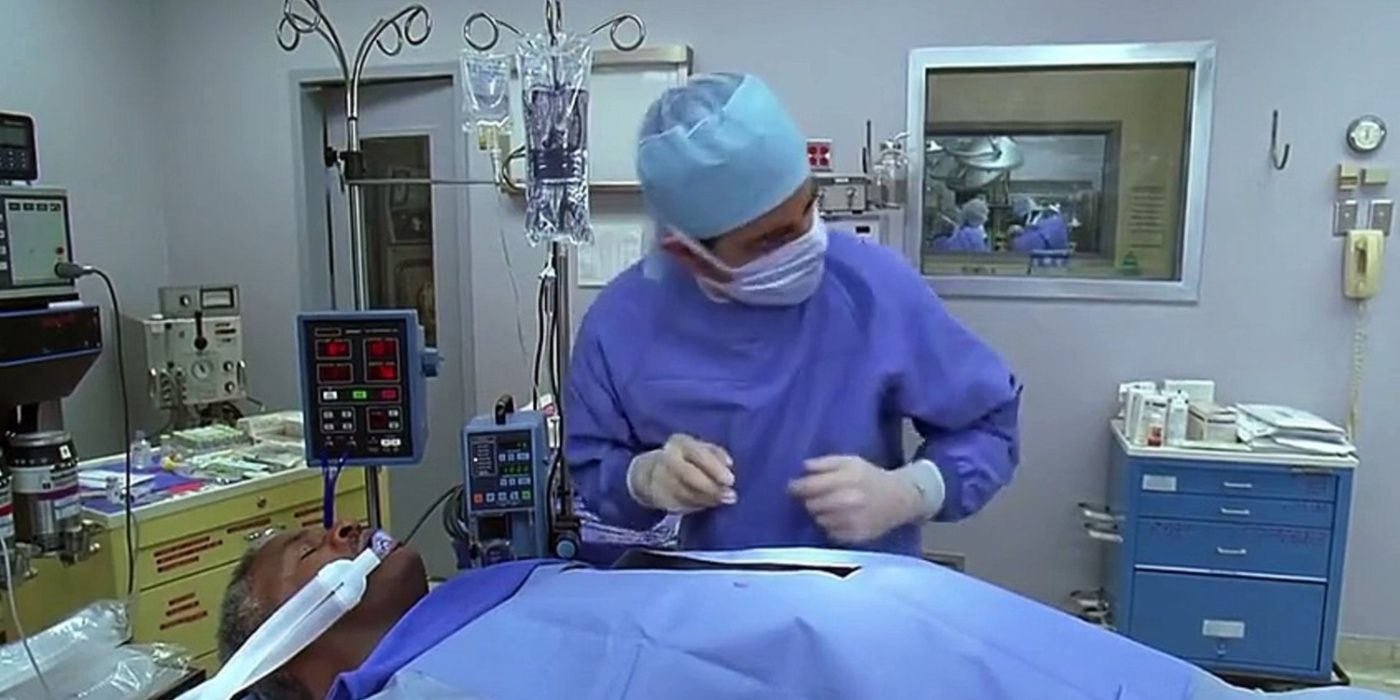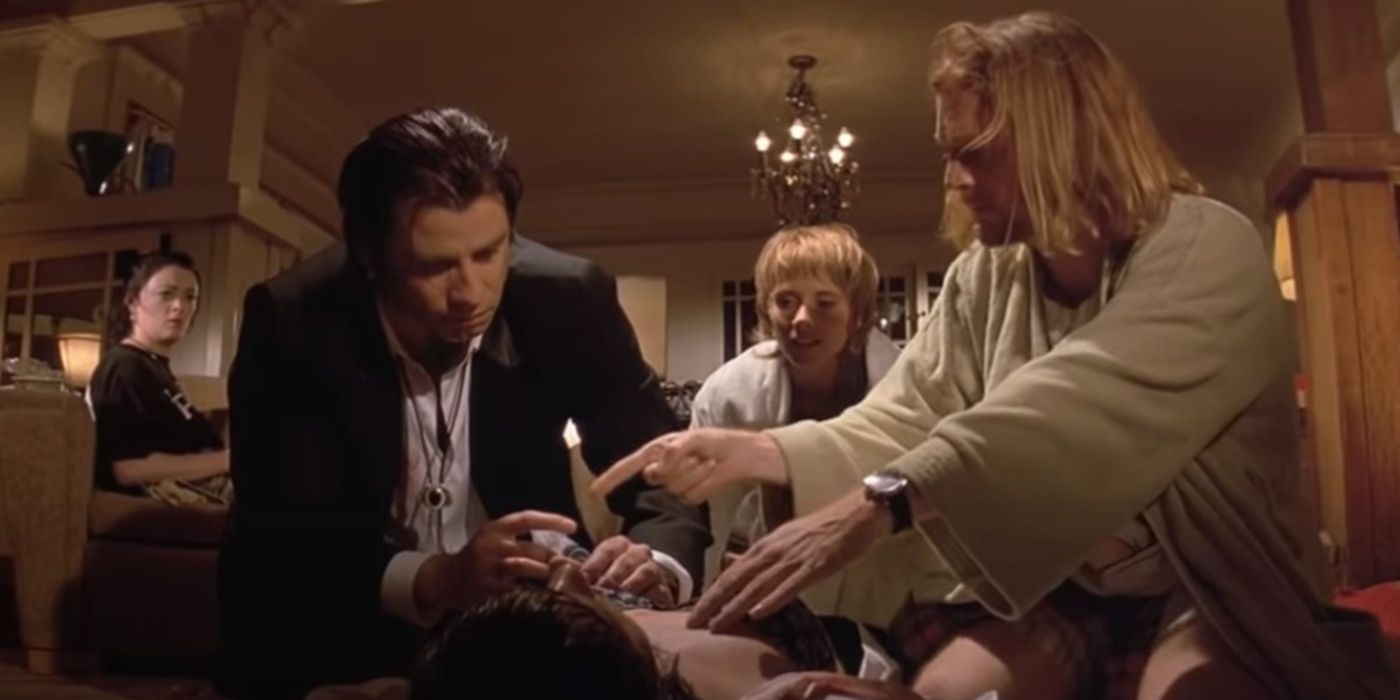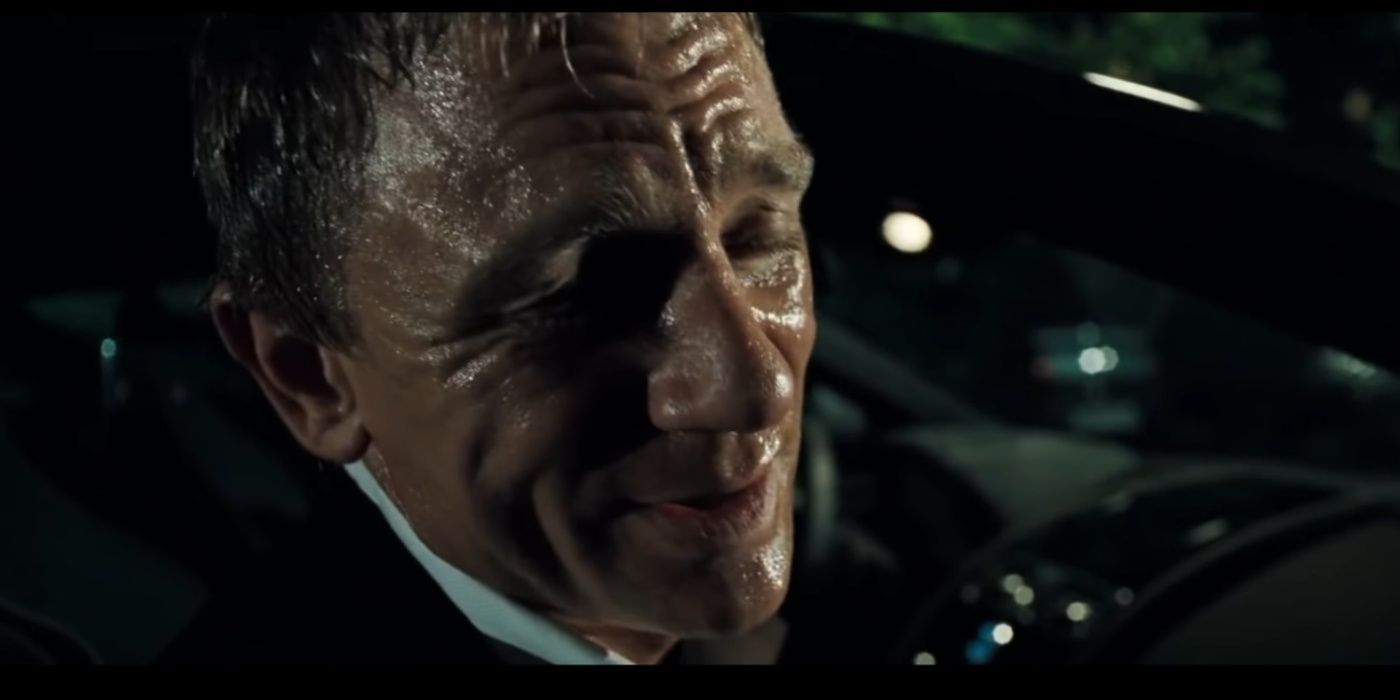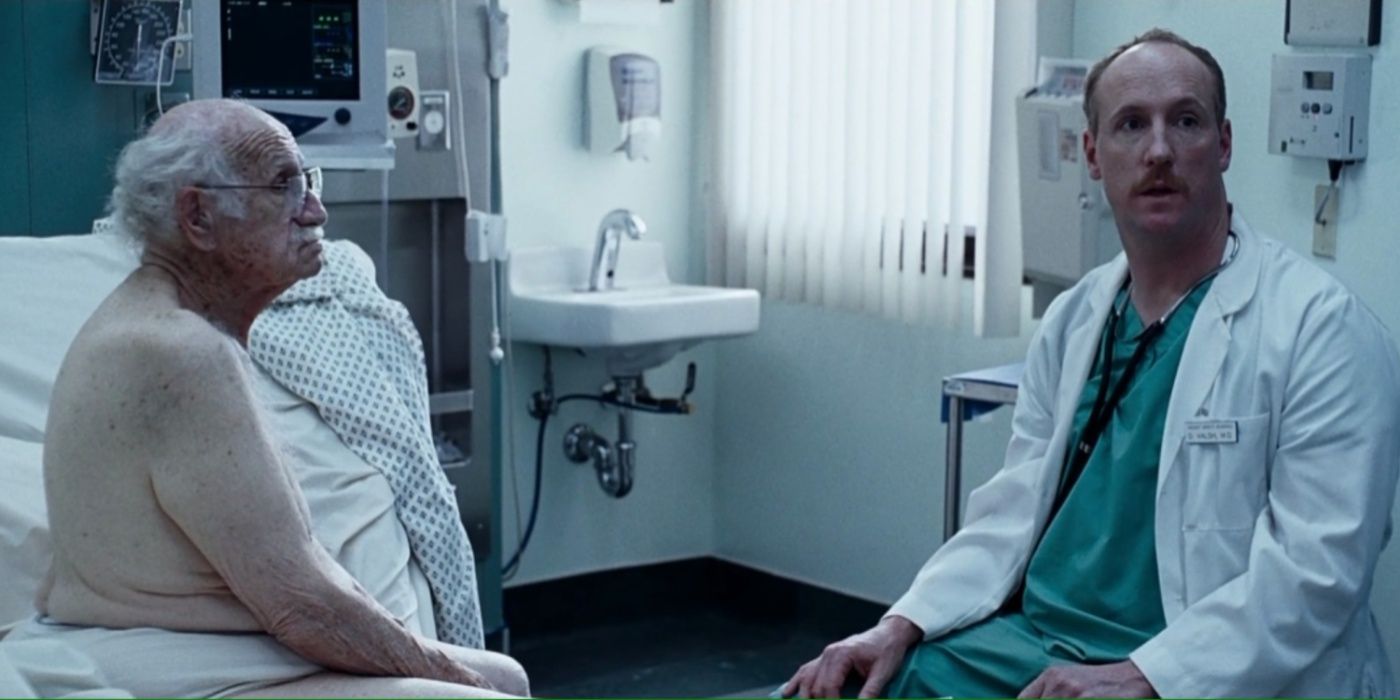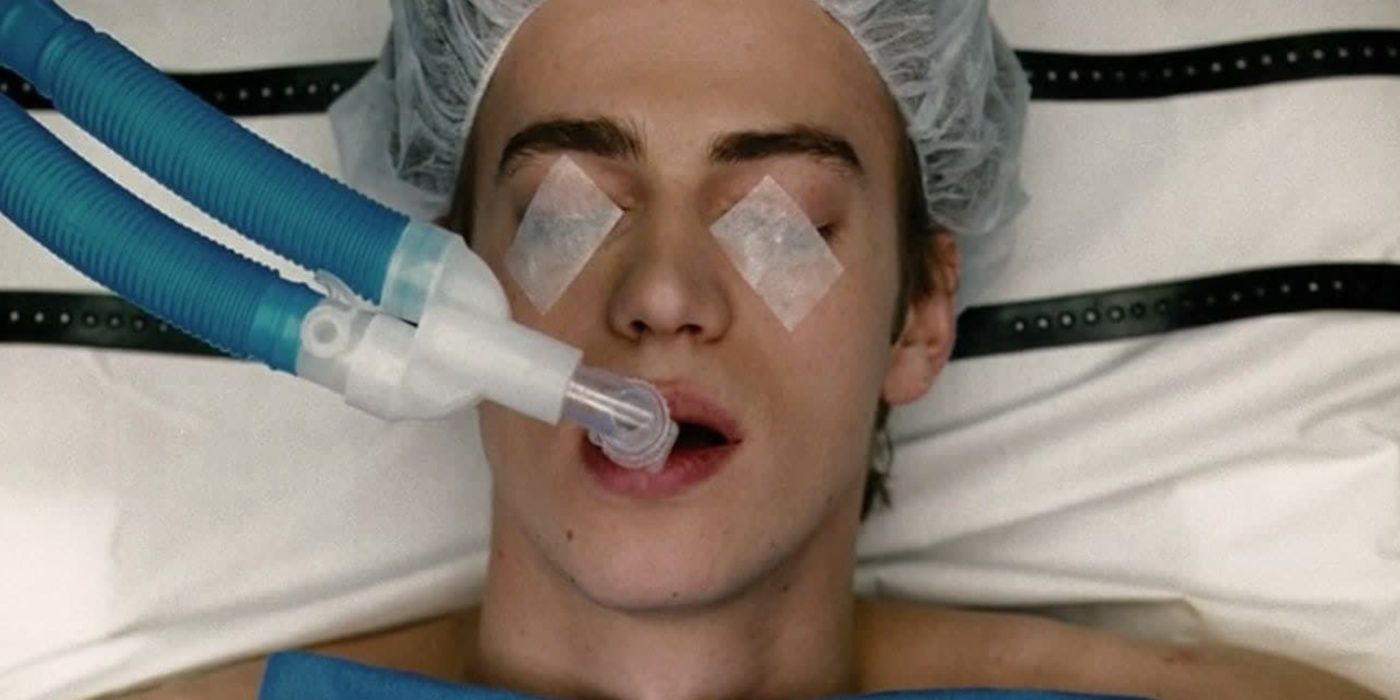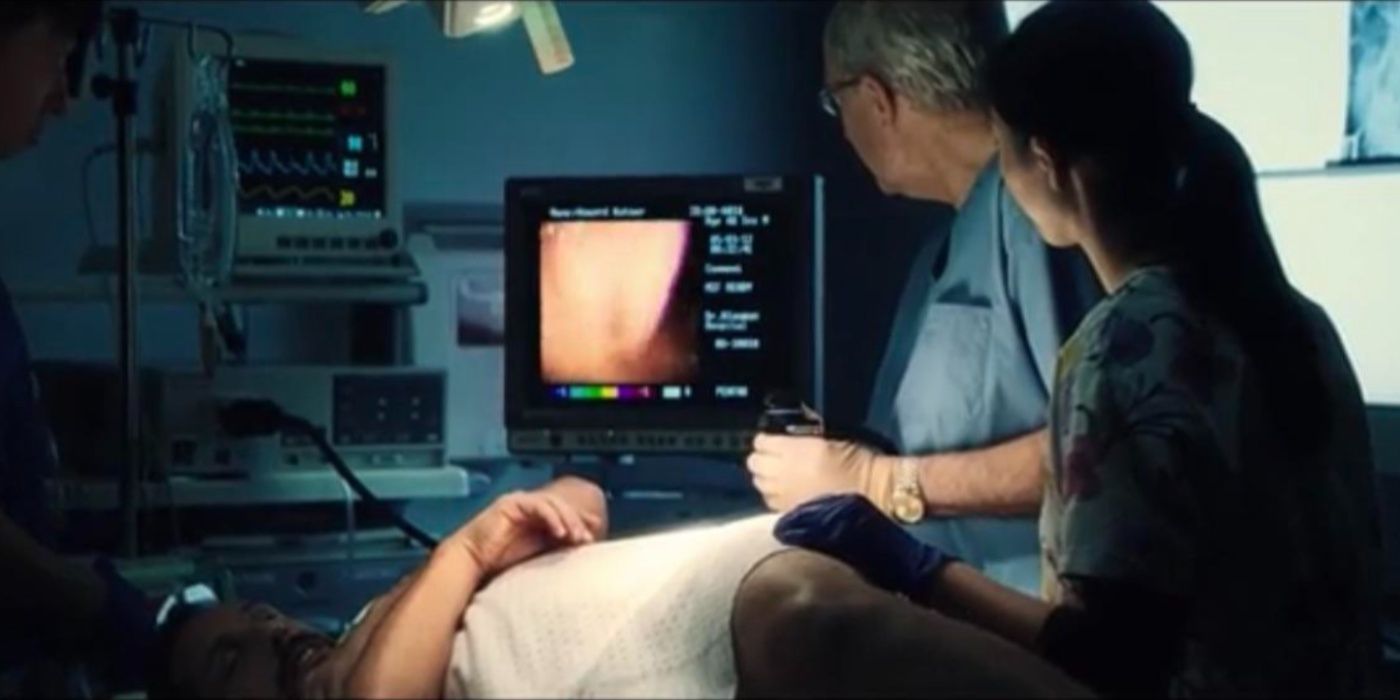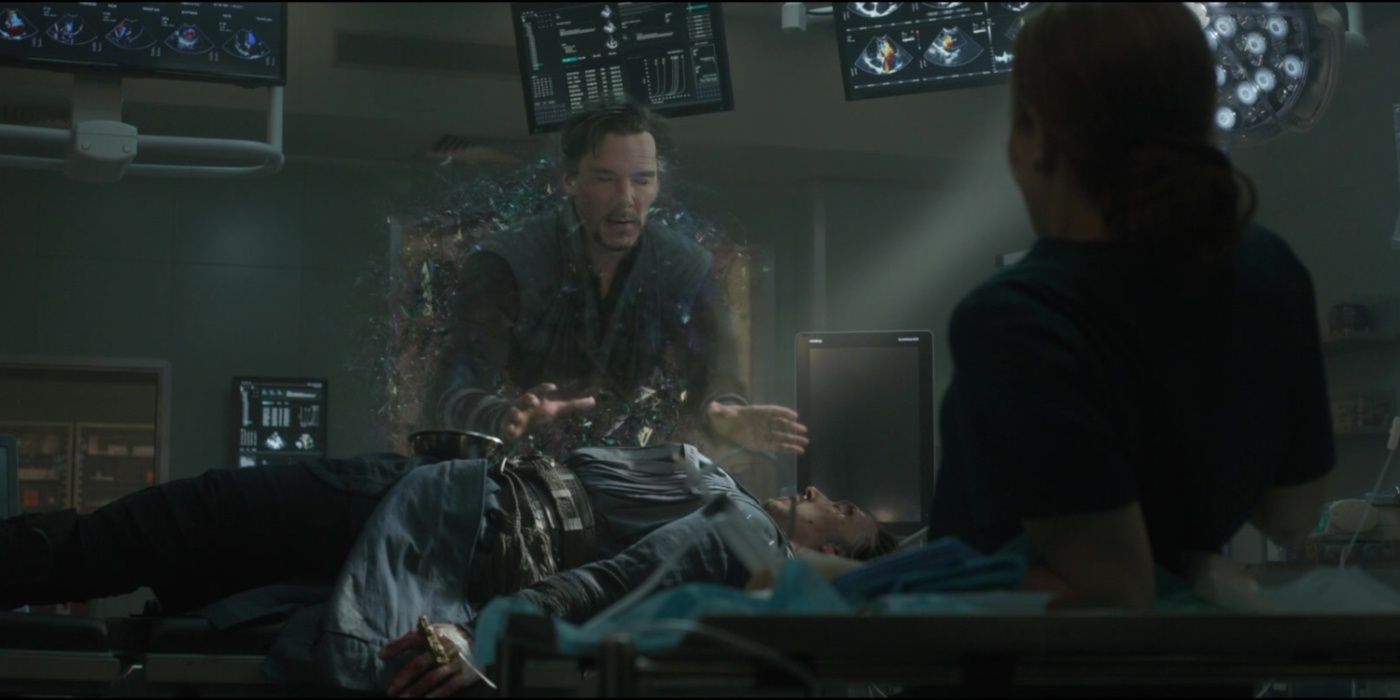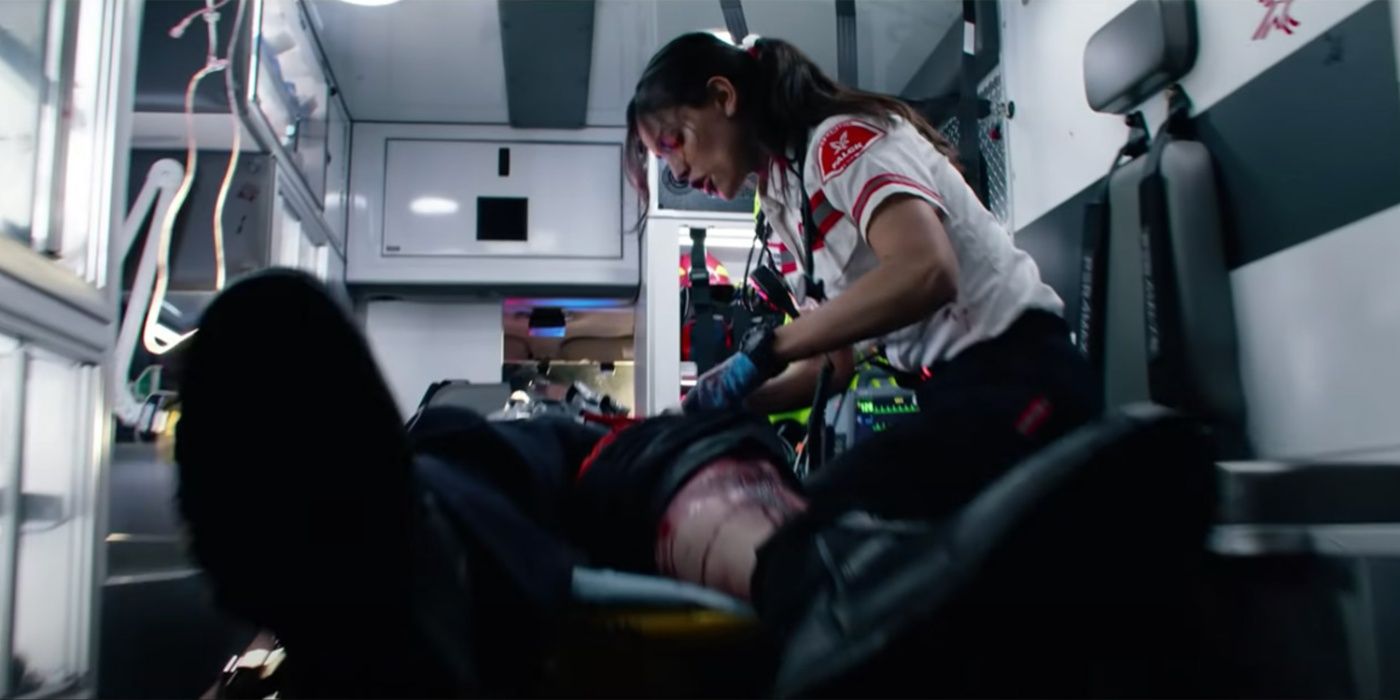Summary
- Medical inaccuracies in movies often stem from the desire to create more dramatic and exciting scenes rather than accurately portraying real-life medical situations.
- Real-life medical procedures, such as surgery, can be dull and time-consuming, making it unrealistic for movies to depict them accurately without sacrificing entertainment value.
- Medical experts are often involved in the production of movies to guide the actors and directors on how to perform medical procedures accurately, but creative freedom often takes precedence over medical accuracy.
Medical scenes are common in movies, but experts often criticize them for their accuracy and realism. While some movie scenes accurately present real-life medical situations, others fail to accurately execute the proper scientific steps used when saving a life. From emergency surgery to CPR being performed incorrectly, there are a lot of medical scenes that are simply there for drama effect. Of course, it's unrealistic to expect movies to get every little medical detail right, but some movies have taken their creative freedom too far.
The inaccuracies in even the best movies of all time come from how dramatizing these scenes is more exciting than accurately presenting how they play out in real life. For instance, real-life surgery is immensely dull. Most viewers (except maybe medical experts) are not willing to spend that much time watching a fictional character undergo surgery in the name of medical accuracy. There is quite a lot of research that goes into writing medical scenes. Movies usually have a medical expert on set to direct them on how to accurately perform a medical procedure. Generally, it's more valuable for a movie to be entertaining when compared to being medically accurate.
10 Maggie Shouldn't Be Talking In Million Dollar Baby
Million Dollar Baby is an Oscar-winning movie starring Hilary Swank as Maggie Fitzgerald. Maggie, a talented boxer, gets injured while participating in a boxing match. The injury leaves her paralyzed from the neck down, resulting in her being a ventilator-dependent patient. When her coach, Frank, visits her, Maggie confesses to him that she does not want to live a life as a person with quadriplegia. In what might have seemed like a heroic act, Frank returns to Maggie's room, switches off her ventilator, and injects her with adrenaline. Maggie dies, and Frank leaves the hospital.
This scene was criticized by experts for several reasons. When patients use a ventilator to breathe, they can't talk because the tube is inserted below the vocal cords. Maggie shouldn't have been able to speak at all because of this. The other thing that is wrong with this scene is the way she died. Typically, adrenaline raises a person's heartbeat, it is not a depressant but a stimulant.
Even though it is possible to die from an extremely fast heartbeat, it does not happen as fast as is depicted in Million Dollar Baby. After Maggie dies, the machine that shows vital signs is ominously silent. In real-life medical situations, the vital sign machine makes a lot of noise to alert the medical personnel in the hospital that a patient is in danger. The machines don't just stay silent while a patient dies (via The Anesthesia Consultant).
9 Lindsey Shouldn't Be Yelled At While Getting CPR In The Abyss
James Cameron's 1989 movie, The Abyss, is a testament to Cameron's expert ability to draw out viewers' emotions. The Abyss focuses on a crew of SEAL agents sent to recover an unidentified object in the Deep Core. Dr Lindsey Brigman and her husband, Virgil "Bud" Brigman, are among the crew. Lindsey and Bud are stuck in a tiny submarine with only one working diving suit. As the submarine takes up water, and it becomes clear they must leave, or they'll die, the two decide that Bud should wear the diving suit and take Lindsey with him to the platform.
They arrive at the platform, but Lindsey is unconscious. The other crew members promptly begin CPR while Bud yells at her to wake up in the background. As heart-wrenching as this scene is, it's noteworthy that it's not medically accurate. In an interview with Wired on their Technique Critique segment, Dr. Annie Onishi, a trauma surgeon based in Brent, Oregon, heavily criticized this scene. According to Dr. Onishi, when a patient is given CPR, it's not advisable to stop chest compressions for any reason. After all, the only thing that could have saved Lindsey is the chest compressions, not Bud's yelling.
8 Removing A Bullet Doesn't Cure A Patient As Shown In Mr. Bean
Mr Bean is a comedy, so getting a medical scene woefully wrong was meant to add comedic relief. The removal of a bullet from a patient is a common medical scene trope that's worth discussing. In this particular scene, Mr Bean is pretending to be Dr. Bean when he accidentally drops candy into a patient's open chest cavity. Mr. Bean digs inside the patient until he finds the candy. Moments later, the patient starts bleeding. Medical experts rush in and try to save his life, but Mr Bean uses his previous method and ramages into the patient's chest until he removes the bullet.
After removing the bullet, Mr Bean drops it into a metallic surgical pan, which makes the "clink" sound often heard in movies. According to experts, surgical pans in real hospitals are made from plastic, so when a bullet is thrown into it, that "clink" sound is never made. Another inaccuracy in this scene is the misconception that removing a bullet from a patient fixes everything. That, however, isn't the case. When a person with a bullet wound goes into surgery, the main objective is to fix the damage the bullet left in its wake, not to remove it. Plenty of people survive while still having a bullet in their body (via Wired).
7 Mia Wallace Is Wrongly Injected With Adrenaline In Pulp Fiction
Pulp Fiction is famous for its unflinching portrayal of drugs and violence. Mia, who is a known drug addict, snorts a large amount of heroin, which makes her unconscious. Vincent and Mia's dealer attempt to save her life by injecting her with adrenaline. While they are still arguing about where to plunge the needle, Mia suddenly wakes up. It is medically accurate that adrenaline is used to awaken unconscious patients, but how scientifically accurate is this Pulp Fiction adrenaline scene is a trickier question.
Three things in this scene are medically inaccurate. Firstly, when a patient is unconscious, the right action is to give chest compressions instead of arguing about where to inject the needle (via Wired). Secondly, adrenaline is not administered directly to the heart when a patient is under cardiac arrest. Instead, it can be injected through a vein in the arm or the intercostal space on the collarbone. Lastly, the medication used to revive her was wrong. Seeing as she took large amounts of heroin, Narcan would have been the preferred choice of medicine (via The Anesthesia Consultant).
6 James Bond Would Have Died From Poison In Casino Royale
James Bond can do anything, but surviving while poison courses through his blood is a bit of a stretch. The scene begins when Bond consumes a drink laced with poison. After realizing he is dying, he rushes to his car, uses a device that supposedly does everything, and contacts M's headquarters. He then draws blood from his wrist, and the aforementioned device, which is connected to his wrist, transmits his vital signs to a doctor in London who quickly asses that Bond is in ventricular tachycardia. The doctor then instructs him to inject himself with the antidote to counteract the digitalis, but he passes out before using the defibrillator.
Bond was on the verge of being unconscious. Anyone in that state couldn't possibly be able to inject a needle in the right vein, much less put defibrillator pads on themselves (via Insider). Secondly, the speed at which he got his blood test results back is astonishing. A whole process goes into testing blood, which is why results take so long.
Lastly, the antidote he uses to cure himself is extremely rare. It's impossible that it can be found in anyone's glove box. While seeing Bond inject himself in the neck at a 90-degree angle is entertaining, it's almost impossible to achieve in real life. The neck has two main blood vessels: the jugular vein and the carotid artery. It's impossible to correctly inject anything in either of those blood vessels without careful aim (via The Anesthesia Consultant).
5 Patients Are Not Given Medical Exams In Public As Shown In The Hangover
The Hangover was filled with several scenes that are befitting of an R-rated comedy. One of these scenes occurs when Alan, Phil, and Stu go to the hospital to find out what happened the night of their rager because they couldn't remember anything. They walk in on a doctor giving his patient an exam, and he answers their questions while attending to his patient. This scene doesn't accurately depict how medical exams work in a hospital.
When a doctor is examining or diagnosing a patient, it's against HIPPA rules to have anyone else who isn't a medical personnel in the room with them. Doctor examinations are part of patient-doctor confidentiality, so it's unlikely that anyone could be there while this occurs. Also, the doctor in The Hangover wasn't wearing gloves. It's standard medical procedure to wear gloves while performing a prostate exam. While it's entertaining to see Alan, Stu, and Phil's discomfort during the patient exam, they wouldn't have been allowed to stay if that were a real hospital (via Wired).
4 Clayton Beresford Shouldn't Be Conscious During His Heart Surgery In Awake
In the movie Awake, business mogul Clay Beresford has a massive heart attack that nearly kills him. However, he survives, but his heart continues to weaken, leading to him undergoing a heart transplant surgery. During the surgery, Clay is conscious of his surroundings. When the trailer of Awake was released, it stated that "Every year, 21 million people are put under anesthesia. One out of 700 remain awake." This statement in itself is misleading. Exceptional circumstances lead to intraoperative awareness, such as previous substance abuse or chronic pain, history of intraoperative awareness, and ASA class 4 patients (via The Anesthetic Consultant).
While it is true that some patients can be conscious during surgery, even when under anesthesia, it is worth noting that a vast majority of patients remain unconscious. Another medical inaccuracy in this scene is the removal of Clay's chest hair with a razor. When a patient is being prepped for surgery at a hospital, razors are never used to remove chest hair. This is because they cause tiny abrasions on the skin, which could lead to a patient getting an infection. Electric clippers are the preferred method of removing hair in real hospitals (via Wired).
3 A Colonoscopy Is Performed Incorrectly In Uncut Gems
Colonoscopies are one of the most common medical procedures depicted in medical scenes. The colonoscopy in Uncut Gems might look natural to the untrained eye, but a medical expert could easily spot the medical inaccuracy in the scene. A few things jump out as being medically inaccurate.
A lot of medical jargon is thrown around during this scene, but some of them are not in the correct order. There is a determined order that a gastroenterologist follows when performing a colonoscopy. The main issue in this scene is that the terms that were being used to point out different parts of the colon were not in the right order. This made it seem like the colonoscopy was being performed backward (via Wired).
2 Stephen Strange Shouldn't Be Defibrillated In Doctor Strange
Before Stephen Strange became a superhero, he was a highly skilled neurosurgeon at an affluent hospital. His medical career was cut short when he got into a car accident that permanently damaged his hands. His journey to becoming Doctor Strange began when he went to Kamar-Taj to heal his hands. During a fight with Kaesilius' henchmen, Doctor Strange gets stabbed, and he teleports himself to his previous hospital. While there, he seeks out Dr. Palmer and tells her he has a cardiac tamponade. A cardiac tamponade is a medical condition that happens when the pericardial sac gets filled with too much blood or fluid which results in the heart being compressed.
Dr. Palmer quickly gets to work and performs percussion, which is a procedure that is used to assess if a person has a cardiac tamponade. While the method of assessment was right, there are still some scientific inaccuracies in this scene. For instance, it's not possible for someone to know they are having a cardiac tamponade, but somehow Doctor Strange knew his exact condition.
Secondly, the use of a defibrillator to start his heart after he flat lines is incorrect. Defibrillating returns the heart to its normal rhythm when a patient is in ventricular fibrillation. However according to the monitor that showed the flat lining, Doctor Strange has a cardiac arrest rhythm that does not require defibrillation (via Insider).
1 Officer Zach Shouldn't Get Emergency Surgery In Ambulance
Michael Bay's thriller, Ambulance, features a medical scene that must be dissected for its accuracy. When Danny and Will's bank heist goes wrong, gunfire ensues which ends in an officer getting shot. They are forced to hijack an ambulance to save his life and escape from law enforcement officers. Cam, is the intense EMT who operates the ambulance in question. When Cam is taken hostage in the ambulance, she becomes integral in helping save Officer Zach's life as he is dying from a bullet wound inflicted on him during the shoot-out.
Randy Li, a paramedic based in New York pointed out a few things wrong with this medical scene. Firstly, skin is never cut in a medical situation unless necessary. Secondly, surgeries are not typically performed in an ambulance. The inside of an ambulance is not conducive for surgery because it is unsanitary. There are a lot of germs that could result in a patient getting an infection. Lastly, ambulances don't move at a high speed because there is usually a patient in there who is undergoing medical care (via Insider).
Sources: Various.

